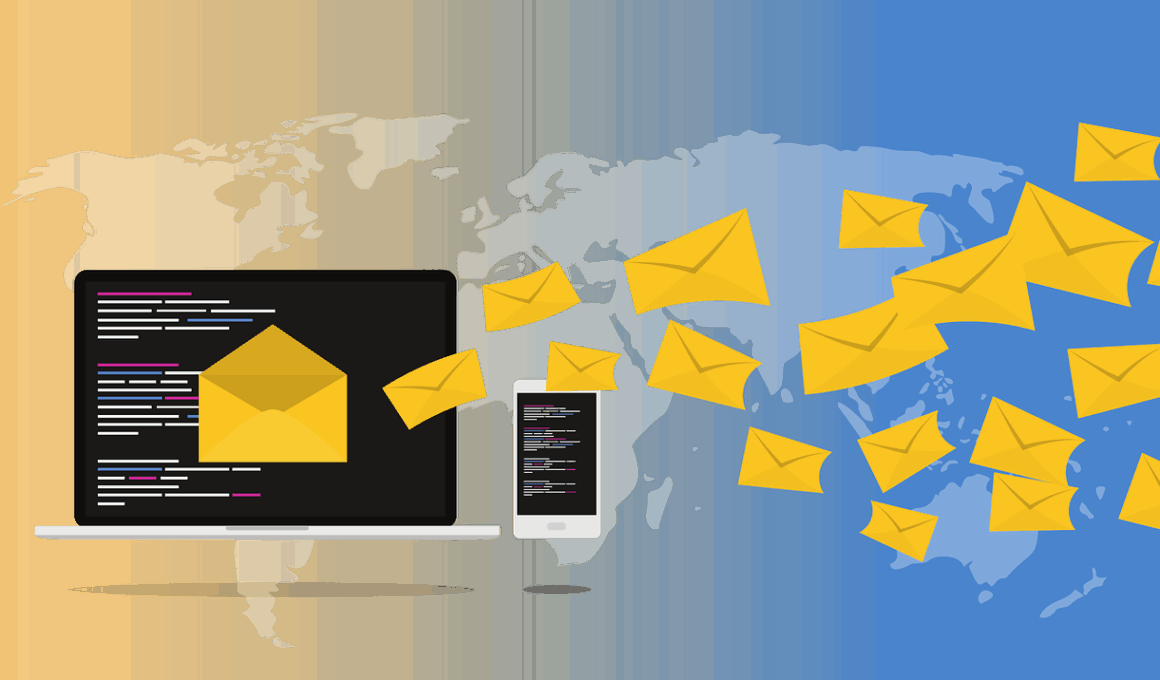Setting Up Welcome Transactional Emails for New Customers
Welcome transactional emails are essential for enhancing customer experience. These emails serve multiple purposes, including reinforcing the brand’s identity and ensuring customers feel valued. A well-crafted welcome email sets the tone for future interactions. It introduces customers to the brand’s culture, effectively creating an emotional connection that can lead to lasting loyalty. To start, ensure your welcome email design reflects your brand’s visual identity, utilizing consistent colors and fonts. This consistency helps customers immediately recognize your communications, fostering a sense of familiarity. Furthermore, craft compelling subject lines that encourage recipients to open the email. Brief and engaging subject lines can significantly impact open rates. Subsequently, the content should balance information with personal touch. Addressing customers by name in the greeting adds a personal flair. Utilize a warm and inviting tone to create a favorable impression. Moreover, consider including a thank you message for their recent sign-up or purchase, highlighting appreciation. This gesture enhances customer sentiment. Incorporate calls to action that guide recipients toward what to do next, such as exploring your website, checking their account, or taking advantage of exclusive deals.
Key Elements of a Welcome Email
To maximize the potential of welcome transactional emails, focus on incorporating vital elements. First, include a personalized greeting to establish a connection with your customers. Using their first name makes the email feel more authentic and engaging. Secondly, convey gratitude for their trust and sign-up. Incorporating a brief thank-you message sets a positive tone right from the start. Additionally, utilize an appealing layout featuring engaging graphics or images. Visuals capture attention and can provide an overview of products or services. Furthermore, consider adding clear navigation links within the email to enhance user experience. These links can direct customers to popular sections of your website, facilitating easy exploration. Moreover, highlight any exclusive offers, discounts, or free trials available to new customers, as this encourages immediate engagement. Clearly outlining these benefits can ignite interest and excitement about what’s to come. Additionally, a quick guide or list of key features, such as support hours and contact information, can be beneficial. This information helps in reducing any apprehensions new customers may have.
Segmenting your customers should also be a consideration in your approach. Understanding who your audience is allows you to tailor emails. You may categorize customers based on interests, location, or behaviors. Segmenting not only allows for personalization but also enhances the likelihood of engagement. Utilizing tools for tracking customer actions can yield insights that drive this segmentation, letting you refine your strategies over time. Additionally, consistency remains key in follow-up emails. Establish a cadence for subsequent emails, ensuring customers receive timely information. Whether it’s regular newsletters, tips, or product updates, maintaining communication fosters loyalty. Moreover, automate the processes where possible to save time. Automation provides a seamless workflow, ensuring that welcome transactional emails are sent instantly upon sign-up, thus enhancing the experience. Testing various email templates throughout different segments is also important. Conduct A/B testing to determine which designs yield better engagement metrics. By evaluating open and click-through rates, you can adjust your strategy accordingly. Lastly, keep an eye on feedback and adapt your approach to continually improve your welcome email campaigns.
Best Practices for Welcome Transactional Emails
Follow best practices to ensure your welcome emails are effective. First and foremost, prioritize mobile optimization since a considerable number of customers access emails on their devices. A mobile-friendly design enhances readability, increasing user engagement. Also, consider the length of your content; shorter, more concise messages often perform better. Readers appreciate content that gets straight to the point, avoiding unnecessary scrolling. Moreover, ensure your emails are visually appealing with well-structured layouts. Utilize sections and bullet points for easy reading, helping customers quickly spot essential information. Additionally, include social media links, encouraging customers to engage with you across platforms. Social connections reinforce community and brand loyalty. Another vital element is ensuring compliance with email regulations. Make it easy for recipients to unsubscribe if they wish, as this cultivates trust. Providing a smooth unsubscribe process means customers feel comfortable engaging with your brand without feeling coerced. Additionally, utilize A/B testing regularly to refine your strategies and enhance your email metrics. Testing elements such as subject lines, CTA placements, and visuals can yield valuable insights into what resonates with your audience.
Pay attention to the timing of your emails as well. Sending welcome emails promptly boosts customer satisfaction. Ideally, a welcome email should arrive immediately after sign-up. This quick response signifies your attentiveness and dedication to the customer’s journey. Furthermore, customize your email sequences based on customer actions, tailoring follow-up emails within specific timeframes. Tailoring sends more relevant content, improving overall engagement rates. Additionally, evaluate customer behavior after they have received a welcome email. Monitor engagement rates, click-throughs, and conversions to see how effective your email campaigns are. Using metrics can help you adjust any aspects that may need fine-tuning. It’s also beneficial to implement feedback forms within the welcome email. Asking customers how they feel or what they want can give insights for future emails. Actively engaging in this dialogue demonstrates your commitment to meeting their needs. Moreover, if feasible, include a referral or share button that encourages customers to introduce others to your services. Referral systems can expand your reach and attract new customers organically. Creating incentives for referrals can boost participation, amplifying your email’s effectiveness.
Conclusion: Crafting Effective Welcome Emails
In conclusion, crafting effective welcome transactional emails entails a thorough understanding of your audience and careful planning. The insights garnered from analyzing customer behavior, preferences, and feedback can shape your email strategies. Utilize the information gathered to maintain consistent communication and engage with your audience effectively. Furthermore, a strategic blend of informative and accessible content can create lasting impressions. An approachable tone intertwining brand personality creates a welcoming atmosphere. A successful welcome email not only provides essential information but also entices customers to further engage. It should inspire excitement about the next steps in their customer journey. Investing time into designing thoughtful welcome emails can yield substantial returns in customer retention and satisfaction. Lastly, continuously evolve your strategies based on data-driven decisions. Keeping abreast of industry trends and email marketing best practices will ensure your approach remains effective. Also, as your customer base grows, refine and tweak your emails based on feedback to match shifting preferences. Overall, the effort dedicated to perfecting your welcome emails pays off in creating a loyal customer base that advocates for your brand.
All in all, welcome transactional emails should not be an afterthought in your marketing strategy. They are a fundamental part of building customer relationships and enhancing brand loyalty. Remember that the first impression often lasts. By ensuring your welcome email is engaging and informative, you set the stage for successful interactions. Focus on making customers feel at home right from that initial contact. Plus, with the right balance of information and personalization, you can increase engagement and drive customers toward future actions. Investing in the thoughtful design of these emails reflects your brand’s values and commitment to excellence. Lastly, don’t underestimate the power of continuous improvements. Regularly revisit your email strategies to ensure they align with customer expectations. Innovations within the email marketing sector are constant, so remaining flexible in your strategies is invaluable. Embrace feedback, adapt as needed, and continue learning about your audience. Each step you take enhances your overall email marketing efforts, strengthening your relationships with customers. In conclusion, an effective welcome transactional email acts as a catalyst for long-lasting customer engagement.
Resources for Further Learning
For those looking to delve deeper into the art of crafting effective welcome transactional emails, numerous resources are available. Websites dedicated to email marketing, like Mailchimp and Campaign Monitor, offer invaluable guides and best practices. These platforms often showcase successful case studies providing insight into what works. Additionally, consider reading eBooks or enrolling in courses focused on email marketing strategies. These educational resources can deepen your understanding of customer engagement and retention tactics. Also, subscribing to newsletters from leading marketing experts can keep you updated on the latest trends. Following industry blogs not only enhances your knowledge but also inspires creativity. Furthermore, online webinars can be an excellent way to gain direct insights from experienced marketers. Engage in forums or discussion groups to share experiences and learn from peers in your industry. Building a network of contacts can provide ongoing support and knowledge exchange, fostering growth and innovation. Lastly, do not hesitate to invest time in experimenting and testing your own email strategies based on the knowledge gained. Real-world application of what you learn will yield the best results.


